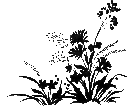 |
The Preserve |
News and Events |
Natural History |
The Trail |
Monitoring |
Restoration |
Library |
Organization |
|
Todmorden Mills Wildflower Preserve
|
Nature NotesYour Nature Guide for the week August 30-September 5InsectsThe Common Milkweed is host to a diverse group of herbivores, predators and parasites whose composition changes with the season. In early summer most visitors to Milkweed plants are nectar feeders. However, later in the season, leaf feeders, such as the bright red Milkweed Beetle, and seedpod feeders predominate. Common Milkweed serves as a larval food plant for successive broods of Monarch butterfly caterpillars from early through late summer; the caterpillars eat the leaves and are able to store the alkaloid chemicals produced by the plant safely in their body tissues. The current, late summer generation of Monarch butterflies will migrate south to overwinter in Mexico. Young seedpods of Milkweed plants are attacked by adult Milkweed Bugs, which suck on the seeds inside. The bugs have an effective predator-escape strategy: when they sense danger they simply retract their legs and plummet off the pod to the ground. Some seedpods become infested with Oleander Aphids, which mass in such large numbers that the pods appear to be bright yellow in colour. WildflowersThe slope below the historic Helliwell House at Todmorden Mills has become overgrown with a native wildflower--the Wild Cucumber. This vine clambers over other wildflowers, shrubs and trees, using tendrils to anchor itself. The delicate, small white flowers are borne on erect spikes which are arranged along the stems, and the leaves are quite large, resembling the leaves of maples. Wild Cucumber is in the Gourd family and is a relative of the garden cucumber, squash, pumpkin, and melon. However, its fruit, which is round, ball-like and covered in soft spines, is not edible. Trees and ShrubsManitoba Maple is one of the most common trees at Todmorden, and indeed in the Don valley. Unlike other maples, this species has a leaf composed of 3-5 leaflets, and is sometimes mistaken for Ash which also has compound leaves. At this time of year, there is no mistaking female Manitoba Maples, now that their characteristic clusters of winged seeds (keys) have turned brown. Previously, the tell-tale keys were green and blended in with the foliage. Although Manitoba Maple is native to Saskatchewan, Manitoba and western Ontario, the eastern extent of the original range is unclear. Most botanists consider it non-native in the Toronto region, and, owing to its ability to produce large numbers of seeds and suckers, and aggressively colonize disturbed sites, it has something of a controversial reputation here. Manitoba Maple is gradually being replaced with native trees as part of the Preserve's ongoing management program. Nevertheless, in its favour, Manitoba Maple has played an important role in stabilizing the site and providing food and habitat for wildlife. BirdsThe Ruby-throated Hummingbird is not resident in the Preserve, but it can usually been seen in spring and again in late summer when it is on migration. In the swamp areas of the woodland trail, you may catch a fleeting glimpse of one feeding at the pendulous orange blossoms of Spotted Jewelweed. A sugar-water feeder situated near shrubs or a flowerbed will often attract them. Nature Notes is researched and written by Mike Dennison and Alejandro Lynch, and is published each week by Hopscotch Interactive (www.hopscotch.ca). In addition to this online version, Nature Notes is available as a print-friendly PDF and as a text-only email version. Please contact Mike Dennison to receive these, or for more info (tel: 416-696-7230, email: dennison@hopscotch.ca). |
| Copyright © 2003-2004 Todmorden Mills Wildflower Preserve |